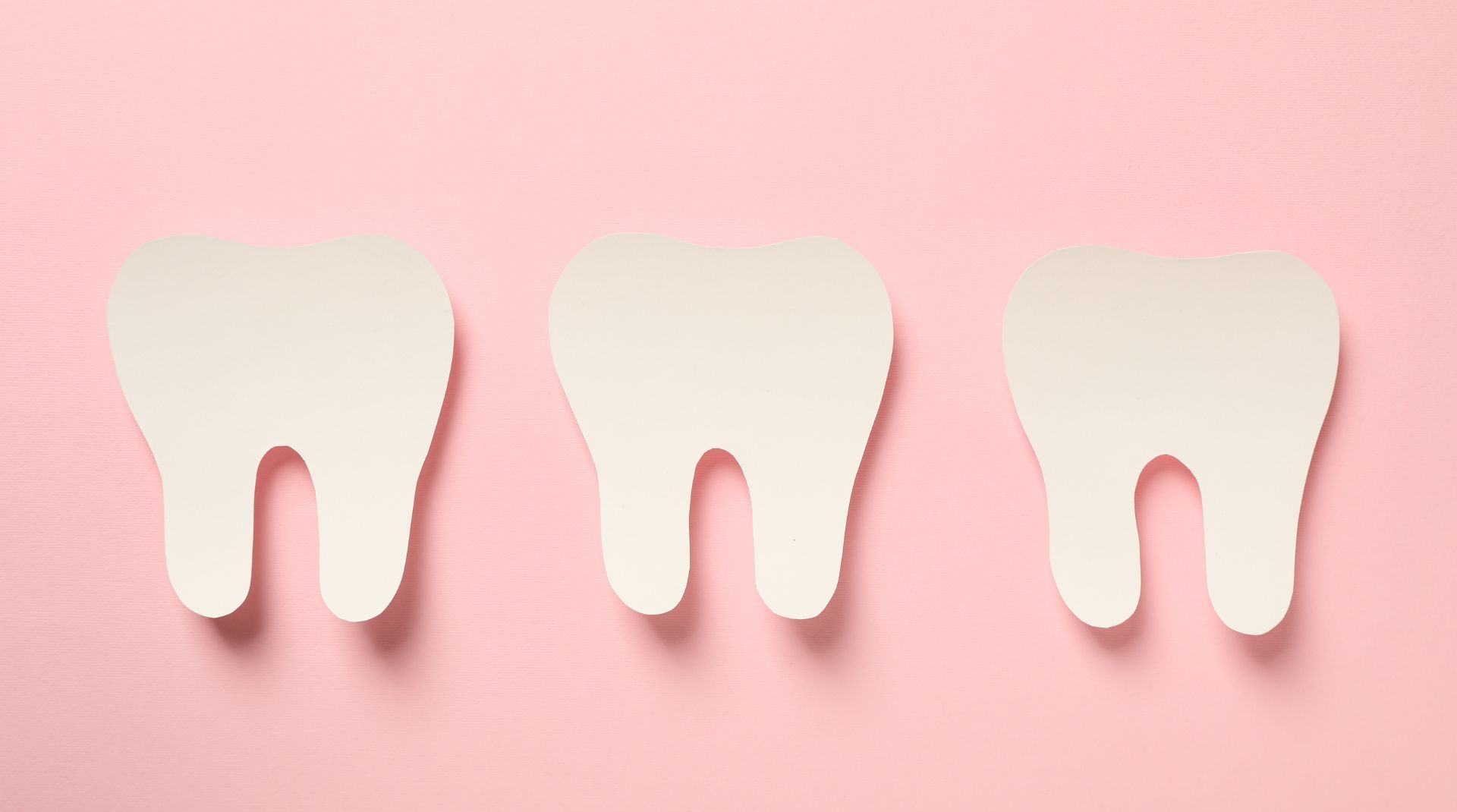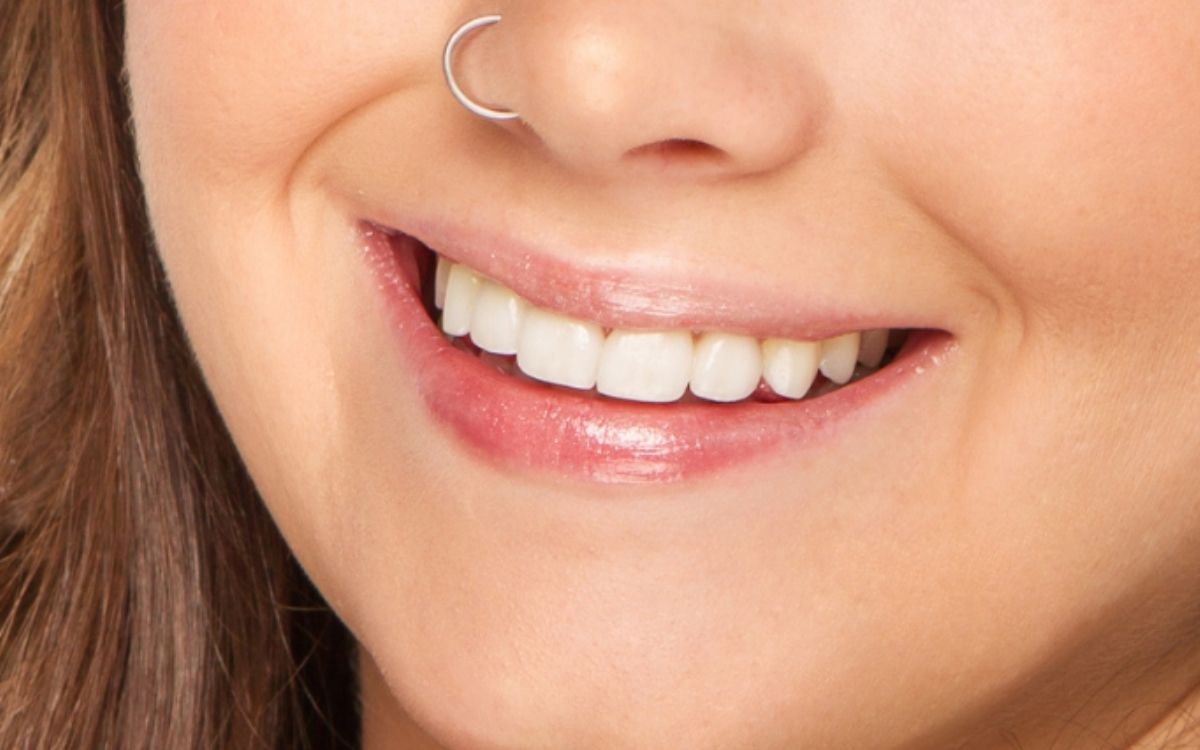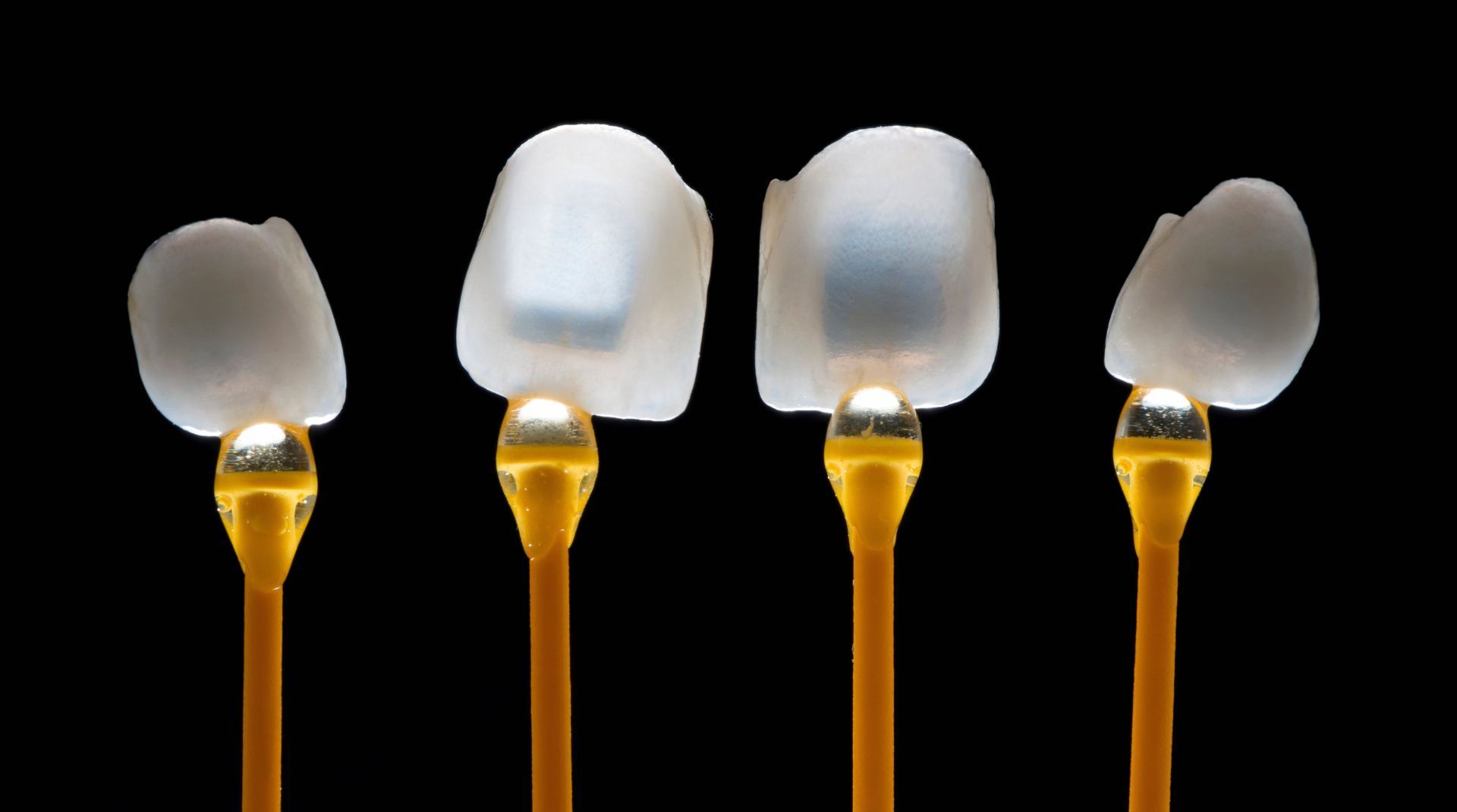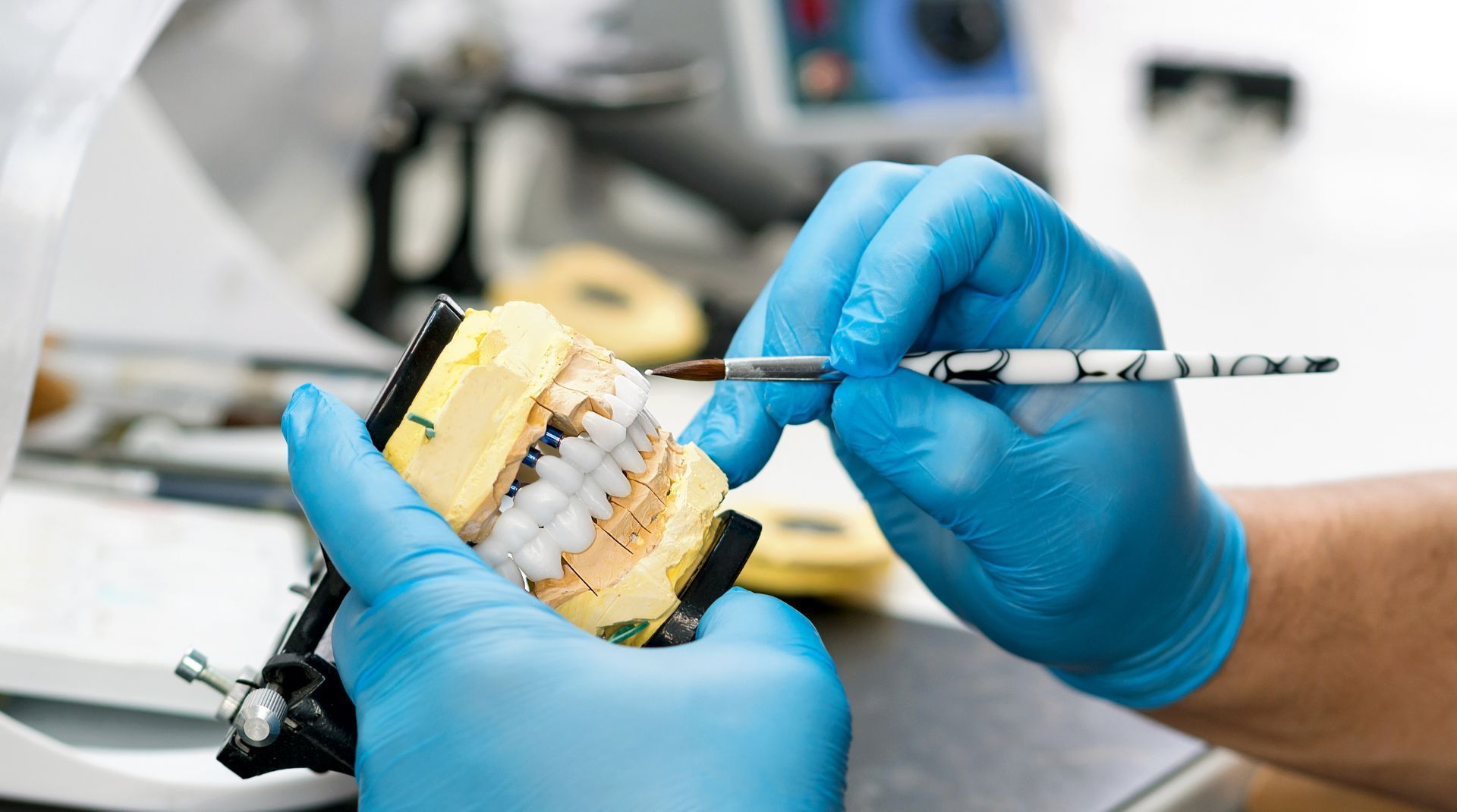How Much Tooth Structure Is Saved?
By Dr. Taylor Workman • October 1, 2025

raditional full crowns often require removing ~60–75% of the tooth’s coronal structure. Adhesive, biomimetic restorations (onlays/overlays/inlays) typically remove ~5–30%, depending on the problem and design. The more healthy tooth you keep, the lower the risks of cracks, sensitivity, and future root canals—while maintaining strength and function.
Why “conserving tooth” matters
Your teeth aren’t solid blocks—they’re a smart sandwich of enamel (rigid, protective) and dentin (tough, slightly flexible). When we remove large amounts of either layer, we change how the tooth handles biting forces. Less remaining structure = higher stress, more microcracks, and a greater chance of long-term complications.
Biomimetic dentistry aims to mimic natural biomechanics and preserve as much sound structure as possible, rebuilding the tooth with bonded materials that work with it, not against it.
The numbers: crowns vs. conservative bonded restorations
- Traditional crowns: Classic papers quantifying preparation show ~63–76% of coronal tooth structure is removed for full-coverage crowns (ceramic or metal-ceramic), making them the most invasive common option.
- Biomimetic/onlay/partial-coverage designs: Adhesive inlays/onlays/partial crowns can limit removal to single-digit to ~20–30% (varies by case), because they bond to tooth rather than relying on aggressive “mechanical retention.”
- Clinical direction of travel: Reviews comparing onlays/partial crowns to full crowns confirm the conservative advantage (significantly less removal for partial coverage) with promising clinical outcomes when adhesive protocols are followed.
Bottom line: If your tooth doesn’t absolutely require full coverage, a bonded, partial-coverage restoration can often save dozens of percentage points of healthy tissue—preservation you’ll value for years.
What “saving 40–50% more tooth” looks like in real life
Imagine a cracked or heavily filled molar:
- A full crown reduces all surfaces to create a uniform cap—strong, but at the cost of substantial removal.
- A biomimetic onlay/overlay reinforces the weakened cusps and replaces only diseased or fragile areas, leaving intact enamel and dentin in place—then bonds the restoration to the remaining tooth to restore stiffness and seal.
That difference in removal is why partial-coverage bonded designs can maintain near-original strength while avoiding the “once you crown, you can’t uncrown” cycle.
How conserving structure helps you
1) Lower fracture risk
Teeth with more original structure distribute bite forces better and are less likely to suffer catastrophic cracks. Preserving cusps and bonding restorations that flex with the tooth supports long-term survival.
2) Less irritation to the nerve (pulp)
Deep, extensive preparations get close to the pulp and increase the odds of lingering sensitivity or eventual endodontic treatment. Keeping preparations smaller (and well sealed) helps protect vitality. Studies tracking teeth after crowns show a non-zero incidence of later root canal treatment; conservation + excellent bonding aims to push in the opposite direction.
3) Better margins, better seals
Adhesive techniques—especially with meticulous isolation—reduce microleakage at the margins, a key driver of sensitivity and secondary decay. Rubber-dam isolation improves adhesive performance versus cotton roll isolation in clinical and lab studies.
4) Repairability
Bonded composites and ceramics can often be repaired or selectively replaced later, rather than restarting an aggressive cycle (bigger crown → root canal → post/crown → extraction). Conservation keeps more options open down the road. (General principle supported by adhesive dentistry literature and partial-coverage outcome reviews.)
“Is a crown ever the right call?”
Absolutely. Some situations demand full coverage—for example:
- Severely compromised teeth with too little remaining structure to support bonded partial coverage
- Heavily cracked teeth where complete encirclement is the best way to protect what remains
- Root-canal treated teeth with extensive loss that need ferrule and full protection
Great dentistry is case-by-case. Your provider should show you photos, imaging, and preparation plans explaining why a crown or a conservative bonded restoration is best for your tooth.
What determines how much tooth can be saved?
- Decay/crack extent: We only remove what’s diseased or structurally unsound.
- Remaining wall and cusp thickness: If you can keep ≥2–3 mm of healthy cusp thickness, partial coverage is often feasible; thinner cusps may need reinforcement or coverage. (Research on cusp-thickness thresholds with bonded onlays continues to evolve.)
- Isolation & bonding conditions: Adhesive dentistry demands a clean, dry field—rubber dam helps achieve predictable bonds and seals.
- Material selection: Modern composites and ceramics (e.g., lithium disilicate) let us reinforce what’s there with less drilling—when biomechanics and case selection line up.
What to ask your dentist (so you can compare options)
- “How much tooth structure will you remove for each option?” Ask for a percent estimate and photos/diagrams.
- “Can my case work with a bonded onlay/overlay instead of a full crown?” If not, why not?
- “How will you isolate (rubber dam) and what’s the bonding protocol?” Predictable adhesion matters.
- “What’s the expected longevity and plan if it ever needs repair?” Conservation keeps future options open.
- “What are the trade-offs in cost, chair time, and aesthetics?” Partial coverage can be equal or better esthetically; costs vary by material and lab work.
The takeaway
- Traditional crown prep: often ~63–76% coronal structure removed.
- Biomimetic partial-coverage: commonly ~5–30% removed, tailored to the defect.
- Preserving up to ~80–90% of healthy tooth (when feasible) helps maintain strength, reduce complications, and keep more options open for the future.
If your goal is a tooth that functions like a tooth—not just a “tooth-shaped cap”—ask about bonded, minimally invasive designs. In many cases, they deliver the protection you need without sacrificing what nature already did best.
Sources
- Edelhoff & Sorensen, J Prosthet Dent: Quantified tooth structure removal for various prep designs; crowns ≈63–76%, adhesive/inlay ≈3–30%.
- Edelhoff et al., J Prosthet Dent: Posterior data; crowns most invasive; adhesive options least invasive.
- Wang et al., 2022 review: Onlays/partial crowns vs crowns—less removal with favorable outcomes when adhesively bonded.
- Yavorek et al., 2020: Incidence of root canal therapy after full-coverage restorations (context for pulp risk over time).
- Knight et al., 1993; Falacho et al., 2023: Isolation with rubber dam reduces microleakage and supports stronger bonding.
Insights to fuel your marketing business
Sign up to get industry insights, trends, and more in your inbox.
Contact Us
We will get back to you as soon as possible.
Please try again later.
SHARE THIS







